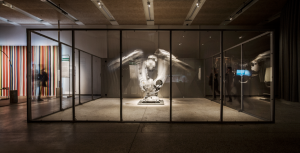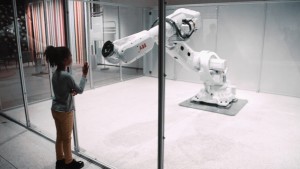Alternative uses for industrial robotics.
After a robot has outlived its programmed service, its disposal becomes a challenge for the enterprise using it. Resale, scrapping, and recycling are some of the options available for old robots – or is it?
What are Robots?
By definition, robots are machines created to make work easier, faster, more accurate, and safer for humans. Robots are mechanically driven and have some ‘artificial intelligence’ that can be programmed to perform repetitive tasks. Since the early 1960’s, robots have been developed for many reasons, but have largely found their place in the manufacturing sector. Some of the work that can be performed by industrial robots is the lifting of heavy goods, painting, welding, polishing, handling hazardous materials and even 3D printing.
Retired Robots
When industrial robots stop working or are replaced with newer versions, is called “decommissioning”. The problem of disposal starts after the robot has been ‘retired’. Resale, sending to scrap, and recycling are some of the options available for decommissioned robots. The outcome that a decommissioned robot meets depends on the nature of work for which it was originally developed, and the materials used for making it.
If no potential buyer comes forward, retired robots are generally sent for the proper disposal of the different materials used to build them. Most robots are built using mechanical parts, which should not pose any dangers, however, within these robots are many electronic sensors, motion detectors, batteries, motors, and other parts that can be hazardous.
Robots Used in Different Ways.
Creative designers, artists and researchers alike have begun using retired robots to decorate offices, shape sculptures and who would’ve thought, reprogramming them to sense and respond to human presence.
Currently exhibiting at The London Design Museum until April 2017, sponsored by Autodesk, Madeline Gannon, has reprogrammed a 2.6m-high, 1,200kg industrial robot called Mimus. Rather than being a tool that merely performs repetitive tasks, Mimus is able to sense and respond to human emotion. Originally seen as a curiosity, visitors soon forget they are looking at a machine, and interact with Mimus like a living creature.
Mimus has no pre-planned movements, rather it is programmed with the freedom to explore and roam about its enclosure. Mimus uses an array of depth sensors embedded into the ceiling to sense and respond to visitors. If Mimus finds someone interesting, Mimus may come in for a closer look and follow them around.
Madeline, believes the robots of the future shouldn’t replace humans, but rather augment our own abilities, and be designed with a focus on human interaction. Her goal in this exhibition is that the behavior and design are intuitive in a way that people who have never even seen a robot before will be able to immediately understand how to interact with Mimus.
Commenting on the topic, Charles Jones, Product Manager at Autodesk talks to Sky News about the alternative uses for industrial robotics. https://youtu.be/WVYloN6ioAA
“At Autodesk, we are working on a vision of human and robots working collaboratively. If we can communicate effectively between man and machine then we are able to create something really valuable that neither man nor machine could create on their own.”
For more information, contact Autodesk
Reference.
http://designmuseum.org/exhibitions/fear-and-love
http://www.autodesk.com/solutions/manufacturing
Image Credits.
http://mx3d.com/projects/bridge
Contact.
www.autodesk.com/make





Add comment
Connect with: Log in
There are no comments